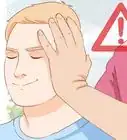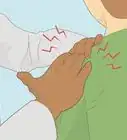This article was co-authored by Monica Morris. Monica Morris is an ACE (American Council on Exercise) Certified Personal Trainer based in the San Francisco Bay Area. With over 15 years of fitness training experience, Monica started her own physical training practice and gained her ACE Certification in 2017. Her workouts emphasize proper warm-ups, cool-downs, and stretching techniques.
There are 12 references cited in this article, which can be found at the bottom of the page.
wikiHow marks an article as reader-approved once it receives enough positive feedback. In this case, 100% of readers who voted found the article helpful, earning it our reader-approved status.
This article has been viewed 435,524 times.
Improper shoulder posture can put unwanted strain on your neck and back, causing chronic pain, and in some cases, tension headaches. Computer work can cause or worsen bad posture by encouraging slouching and allowing the muscles to atrophy. However, there are several ways you can fight bad posture and relieve shoulder pain.
Steps
Reestablishing Shoulder Alignment
-
1Strengthen your mid back. Part of being able to pull back your shoulders and keep them properly aligned is having strong muscles in your mid back region between your shoulder blades. The main muscles groups there are called the paraspinals, rhomboids, trapezius and infraspinatus.[1] When these muscles are too weak, they allow the shoulders to slouch forward. When they're strong, it's easier to hold and maintain good posture.
- Rowing machines are excellent for building strength in the muscles between your shoulder blades. Start with light weights and lower reps and slowly progress to heavier weight and more reps over the course of four to six weeks.
- Doing the "reverse fly" with free weights is also great for strengthening the rhomboids and trapezius muscles. Sit on the edge of a bench with your waist bent forward and looking at the floor. Grab dumbbells in each hand and lift them laterally out and up off the floor, causing your shoulder blades to retract. When your arms are parallel with the floor, hold for a few seconds then slowly lower the dumbbells.
- Swimming is an excellent exercise because it works virtually all your muscles, especially those of your shoulders, spine and legs. Swimming also forces you to have good posture in order to stay above the water line and swim in a straight line.
-
2Make your thoracic spine more flexible. Although your thoracic spine (mid back) naturally curves forward somewhat, too much slouching can create a hump that's stiff and painful. The inflexible hump (medically called a kyphosis) then forces the shoulders and neck forward. As such, try to make your thoracic spine more flexible by extending it (reversing the curve) so that it's easier to realign your shoulders.
- Lay on a large exercise ball with your feet on the floor and looking up at the ceiling. Slowly roll (extend) your mid back over the top of the ball so your head gets closer to the ground.[2] When you feel a nice stretch (not painful), hold it for 15 seconds and repeat 10 – 15 times per day.
- Do the "Superman" pose. Lay face down on some padded flooring with your arms outstretched above your head. Lift your chin, arms and as much of your legs off the ground as you can — simulating Superman flying. Hold for 15 seconds and repeat 10 – 15 times per day. Make sure you place a pillow under the stomach so as not to hyper extend your back as you raise your head, arms and legs.
- Swimming, rowing exercises and yoga classes will also help to make your thoracic spine (and many other areas of your body) more flexible.
- Use a back stretcher, which is a curved lumbar stretcher you place on the ground and lie on for several minutes a day (start out with one minute, gradually increasing to five minutes). Lie down face-up on a back stretcher beneath your middle back. Slowly extend your back on it. This helps offset the constant forward slouched position.
Advertisement -
3Stretch your chest and neck muscles.[3] In addition to weak muscles in the mid back, overly tight muscles in the chest also contribute to pulling the shoulders forward and out of alignment. Ironically, this posture is relatively common in men who go to the gym, but spend too much time on their chest (pectoral) and anterior shoulder muscles and not enough time on their rhomboids (between the shoulder blades) and posterior shoulder muscles. The solution is to avoid overworking the pectorals and make sure they are well stretched and pliable. A similar problem occurs when the muscles of the lower neck (trapezius and levator scapulae) become too tight / strong — they pull up on the shoulders and make it look like the person is always shrugging.
- To stretch out your chest muscles, stand in a doorway or against a corner and raise the arm closest to the wall to shoulder-height. Your arm should be bent at the elbow. This posture resembles half of a football goal post. Rest your arm against the wall or doorframe, and use it to gently stretch your shoulder for 30 seconds. Turn your head and look in the opposite direction of your shoulder to intensify the stretch. Then switch to the opposite shoulder and repeat. Stretching five to 10 times daily will help loosen your chest muscles and allow your shoulders to retract.
- Once your neck is warmed up, start stretching it by laterally flexing your neck and head (bending it sideways) — try to bring your ear closer to your shoulder. Hold for 30 seconds and do both sides five to 10 times daily. Loosening your neck muscles will allow your shoulders to gradually lower.
-
4See a chiropractor. A chiropractor is a spinal specialist trained at assessing posture. Not only can they tell you if your posture is poor, but they can usually pinpoint the cause and offer natural solutions. Chiropractors can diagnose spinal abnormalities that cause misaligned shoulders (scoliosis, osteoporosis, hyperkyphosis), typically with x-rays. They can also make your spine more flexible and functional with manual joint manipulations called spinal adjustments.
- A chiropractor may apply joint manipulation to the middle back to relieve shoulder pain. The middle back is often overlooked as an area of focus for shoulder pain; however, recent research indicates that thoracic spine manipulation is effective for shoulder pain.[4]
- A misaligned shoulder may also be due to a slight dislocation called a subluxation, where the joint is not quite aligned properly. Ask your chiropractor to check both shoulder joints in addition to your spine.
- Sometimes misaligned shoulders are due to issues lower in your body, such as a short leg or an unlevel pelvis. Adjusting the pelvis to realign it and adding a lift to your shoe can help balance your lower body, which positively impacts your upper body.
- Keep in mind that spinal adjustments can't reverse deformities such as scoliosis and are not indicated for an osteoporosis-related hyperkyphosis.
Understanding the Causes of Misaligned Shoulders
-
1Avoid poor posture. Poor body posture is essentially caused by habitually slouching forward while sitting or standing.[5] Contrary to popular belief, your spine is not meant to be straight like a pole. A healthy spine has three natural curves, which makes it look like the letter S from the side.[6] A forward curve at the neck meets an outward curve in the mid back, which blends into another forward curve in the low back. As such, from a side view, your shoulders should be in line with your hip joints (in the middle of your pelvis) and ankles.
- When sitting, standing, and walking, remind yourself to push your shoulders back, tighten your abdominal muscles, lift your chin up and keep your gaze straight ahead. Don't continually lean forward, look down or sit at crooked angles.[7]
- Poor posture is particularly debilitating for children because their growing bones can be somewhat deformed from habitual slouching and misalignment. These postural deformities are very difficult to reverse in adulthood.
- Poor posture puts extra strain on muscles and joints, which can lead to chronic aches and pains and increase the risk of arthritis and injuries.
-
2Deal with shoulder injuries properly. Shoulder injuries from playing sports or other traumas, such as car accidents or falls, can also misalign your shoulder girdle and upper body. For example, dislocated shoulders, separated shoulders, upper arm or collarbone fractures, and various degrees of sprains and muscles tears can cause the shoulder joint to sag lower or jut forward more than it should.[8] As such, make sure your shoulder injury is properly treated and fully healed before returning to activities that stress it.
- Physiotherapy is sometimes needed after a significant shoulder injury to regain full strength within the shoulder girdle muscles and attain full range of motion within the glenohumeral ("ball and socket") joint.
- Not being able to fully move and use your shoulder — due to chronic pain, an unhealed joint injury, arthritis — can quickly atrophy and shorten surrounding muscles. Tight, weak muscles then act to slowly pull the shoulder out of normal alignment.
-
3Ask your doctor if you have scoliosis. Scoliosis is a condition of unknown cause that leads to an unnatural curve (deformity) of the spine, usually in the thoracic (mid back) region. One of the telltale signs of scoliosis is unlevel shoulders.[9] Not only does one shoulder sit lower than the other, but the related shoulder blade often appears more prominent (sticks out more) than the other. Misaligned shoulders and upper bodies is usually what tips off a school nurse or family doctor that a child has scoliosis.
- Scoliosis appears and progresses during childhood (early teens), then stabilizes once adulthood is reached and the skeleton stops growing.
- Scoliosis is thought to be a little more common and have the potential to become more severe in young girls.
- If scoliosis is the cause of misaligned shoulders, then virtually nothing can be done to correct it. Instead, the focus should be on making sure the shoulder is strong and fully functional. Practicing good posture is especially important so the misalignment doesn't get worse.
-
4Try to prevent osteoporosis. Osteoporosis, also called brittle bone disease, involves a lack of normal bone mineralization. Without enough minerals, such as calcium, magnesium and boron, bones are much more susceptible to breaking, particularly in the hip and spine.[10] Compression-type fractures in the mid back (thoracic region) are most common, which tends to cause a humpback (hyperkyphosis) and push the shoulders and neck too far forward. Once the humpback forms, only corrective surgery can help realign the spine and shoulders.
- Osteoporosis is most common among elderly white and Asian women, especially those who are slender and inactive.
- To help prevent osteoporosis, make sure you get adequate amounts of calcium and vitamin D, and exercise on a regular basis.
- Good sources of calcium include: low-fat dairy products, green leafy vegetables, canned salmon, tofu and fortified cereals and juices.[11]
Expert Q&A
Did you know you can get expert answers for this article?
Unlock expert answers by supporting wikiHow
-
QuestionHow can I tell if I have bad shoulder posture?
 Jarod Carter, DPT, CMTJarod Carter is a Physical Therapist, Consultant, and the Owner of Carter Physiotherapy, a manual physical therapy clinic in Austin, Texas focused on manual therapy as well as telehealth services to resolve pain and injuries. Dr. Carter has over 15 years of professional physical therapy experience. He received a DPT (Doctor of Physical Therapy) and an MTC (Manual Therapy Certification) from the University of St. Augustine for Health Sciences. Dr. Carter also holds a BS in Kinesiology from the University of Texas at Austin.
Jarod Carter, DPT, CMTJarod Carter is a Physical Therapist, Consultant, and the Owner of Carter Physiotherapy, a manual physical therapy clinic in Austin, Texas focused on manual therapy as well as telehealth services to resolve pain and injuries. Dr. Carter has over 15 years of professional physical therapy experience. He received a DPT (Doctor of Physical Therapy) and an MTC (Manual Therapy Certification) from the University of St. Augustine for Health Sciences. Dr. Carter also holds a BS in Kinesiology from the University of Texas at Austin.
Physical Therapist
-
QuestionHow do you realign your shoulders?
 Jarod Carter, DPT, CMTJarod Carter is a Physical Therapist, Consultant, and the Owner of Carter Physiotherapy, a manual physical therapy clinic in Austin, Texas focused on manual therapy as well as telehealth services to resolve pain and injuries. Dr. Carter has over 15 years of professional physical therapy experience. He received a DPT (Doctor of Physical Therapy) and an MTC (Manual Therapy Certification) from the University of St. Augustine for Health Sciences. Dr. Carter also holds a BS in Kinesiology from the University of Texas at Austin.
Jarod Carter, DPT, CMTJarod Carter is a Physical Therapist, Consultant, and the Owner of Carter Physiotherapy, a manual physical therapy clinic in Austin, Texas focused on manual therapy as well as telehealth services to resolve pain and injuries. Dr. Carter has over 15 years of professional physical therapy experience. He received a DPT (Doctor of Physical Therapy) and an MTC (Manual Therapy Certification) from the University of St. Augustine for Health Sciences. Dr. Carter also holds a BS in Kinesiology from the University of Texas at Austin.
Physical Therapist
References
- ↑ http://orthoinfo.aaos.org/topic.cfm?topic=A00635
- ↑ http://breakingmuscle.com/mobility-recovery/3-exercises-to-reverse-the-effects-of-poor-posture
- ↑ Monica Morris. Certified Personal Trainer. Expert Interview. 18 November 2019.
- ↑ http://www.ncbi.nlm.nih.gov/pmc/articles/PMC3267444/
- ↑ Jarod Carter, DPT, CMT. Physical Therapist. Expert Interview. 11 June 2020.
- ↑ http://www.mayoclinic.org/healthy-lifestyle/adult-health/multimedia/back-pain/sls-20076817?s=2
- ↑ Monica Morris. Certified Personal Trainer. Expert Interview. 18 November 2019.
- ↑ https://www.nlm.nih.gov/medlineplus/shoulderinjuriesanddisorders.html
- ↑ https://www.mayoclinic.org/diseases-conditions/scoliosis/symptoms-causes/syc-20350716
- ↑ https://www.mayoclinic.org/diseases-conditions/osteoporosis/symptoms-causes/syc-20351968
- ↑ https://www.mayoclinic.org/diseases-conditions/osteoporosis/symptoms-causes/syc-20351968
- ↑ http://www.nhs.uk/Livewell/Backpain/Pages/back-pain-and-common-posture-mistakes.aspx
- https://www.wikihow.com/Prevent-Osteoporosis
- https://www.wikihow.com/Do-Scoliosis-Treatment-Exercises
About This Article
To align your shoulders without seeing a doctor, try stretching your chest and neck muscles 5-10 times a day. Stand near a doorway and raise your arm closest to the wall so that it’s shoulder height. Bend your elbow and rest your arm against the wall for 30 seconds at a time. You can also try strengthening your back with swimming exercises and light rowing machines. For more severe pains, visit a chiropractor. Keep reading for advice from our Medical reviewer about why your shoulders might be misaligned.
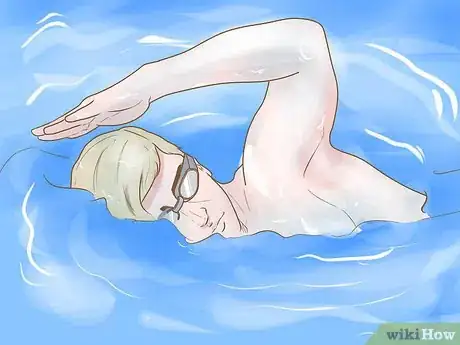
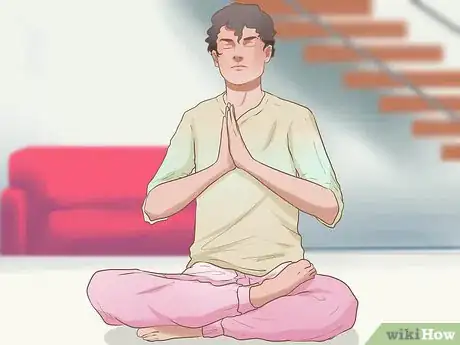
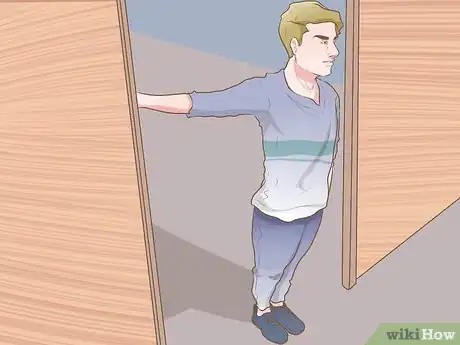

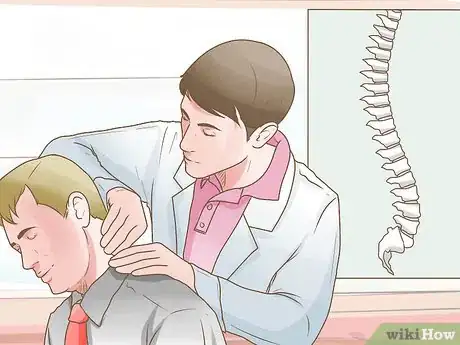
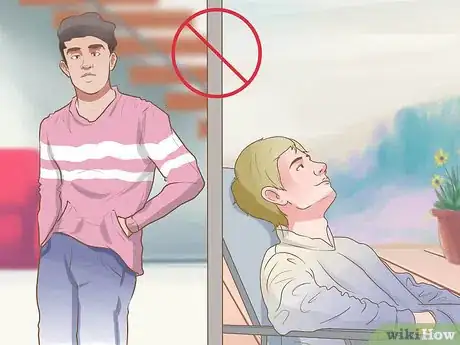

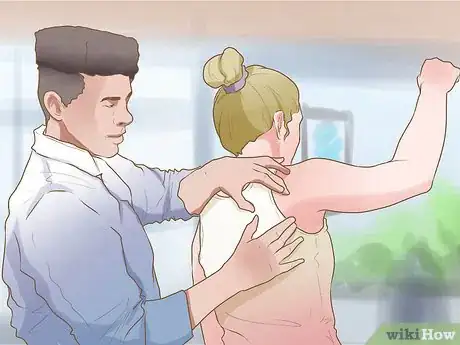


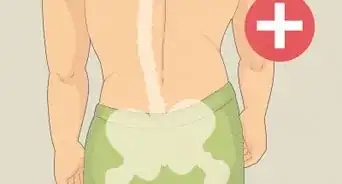


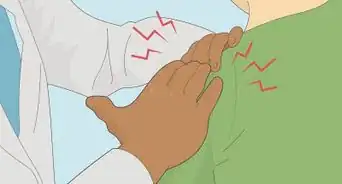
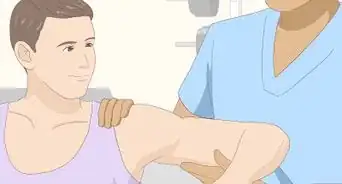
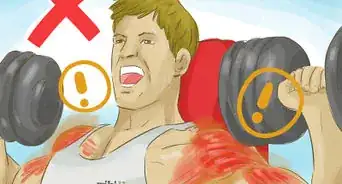

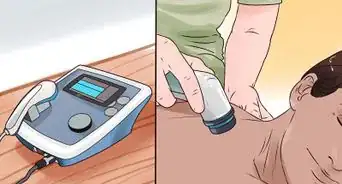
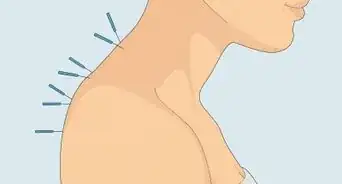
-Step-3-Version-3.webp)













